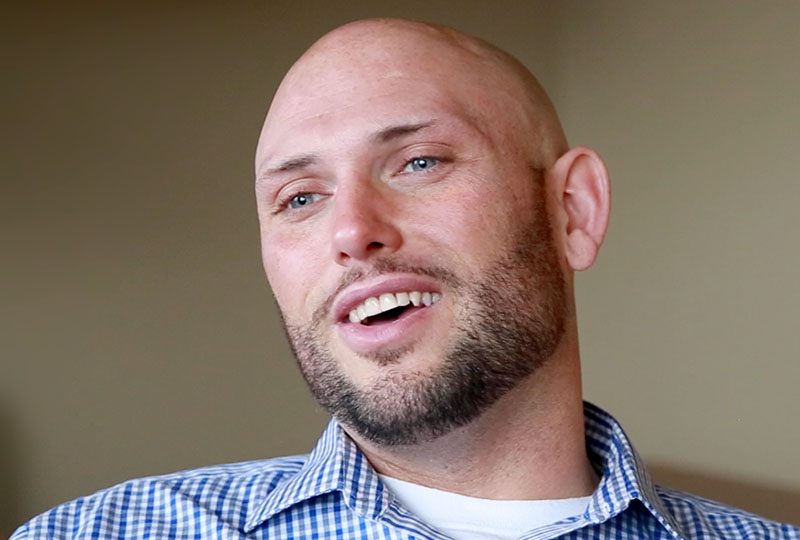Congestive heart failure at 30 motivated Travis Ghee to make big changes.
Travis Ghee has an intensity honed by years working as a firefighter and extradition agent transporting prisoners across the country. His quick smile and laugh soften his demeanor, but he looks like a man who could still handle a hard-nosed criminal or raging house fire.
You’d never guess Ghee doesn’t have a perceptible pulse because an electric pump embedded near his heart is circulating his blood. At 30 years old, Travis was diagnosed with congestive heart failure.
In 2011, Ghee was finishing his day transporting a prisoner from Moab, Utah, when he had trouble catching his breath during dinner.
“I went to the emergency room and they thought I was having a heart attack,” said Ghee. “They slapped nitro patches on me and hooked me up to all these machines. The doctor told me it was congestive heart failure. I asked, “What can I do to get better and get back to work?” The doctor said, “You don’t understand, your life just changed.”
Travis had to quit his job, move back home to Murfreesboro and begin treatment with drug therapy. After three years even the drugs couldn’t help his weakened heart pump enough blood. To save his life, surgeons with the Heart Failure Program at Vanderbilt University Medical Center implanted a left ventricular assist device, or LVAD, in his chest to take over much of the work of his heart.
The LVAD is an electric pump that draws oxygenated blood from the left ventricle heart chamber and circulates it to the body through the aorta. A cable exits his body near his stomach and connects to a battery and controller, each about the size of a paperback novel.
Because the technology is so new, doctors aren’t exactly sure how long LVAD patients can survive.
Patients on an LVAD have two paths. If they are eligible, patients can use the pump as a bridge until a donor heart is available. Patients who cannot get a heart because of medical conditions, age or weight are put on a path called destination therapy. Destination therapy means they stay on the pump for the rest of their lives.
Ghee’s age made him a great candidate for a new heart, but doctors couldn’t put him on the transplant list because he was overweight.
“I wasn’t going to accept the idea of destination therapy. I set a goal to live,” said Ghee. “So I went to the gym and started eating right. I ended up losing over 100 pounds and making the transplant list. It was a glorious day when they called to say I could get a heart.”
Ghee is quick to credit his mother and the support he found through the Vanderbilt Heart Institute. “They put up with a lot of grumpiness when I was hungry,” he adds.
In typical fashion, Ghee is not just sitting around waiting for his transplant. When he is not out in the woods hunting or cheering on the Tennessee Vols, he is sharing his journey to better health with new LVAD patients at Vanderbilt.
“Travis is bringing along a trail of heart patients who see his example of a better life, said Dr. Ahmad Abu-Halimah, a cardiologist at Vanderbilt Heart Murfreesboro. “I can’t make patients have that will to get better, but Travis is teaching all of us about living life to the fullest.”
Editor’s note: After more than a year on the transplant waiting list, Travis received a donor heart on November 30, 2016. He is still active and making the most of the second chance offered by the kindness and sacrifice of a heart donor.

More than 4,000 people are waiting for heart transplants in the U.S. and Vanderbilt Heart has performed 300 LVAD heart pump surgeries. Organ donations are the key to life for heart patients like Travis Ghee. Please consider signing your state’s donor registry and including donor willingness on your driver’s license.

